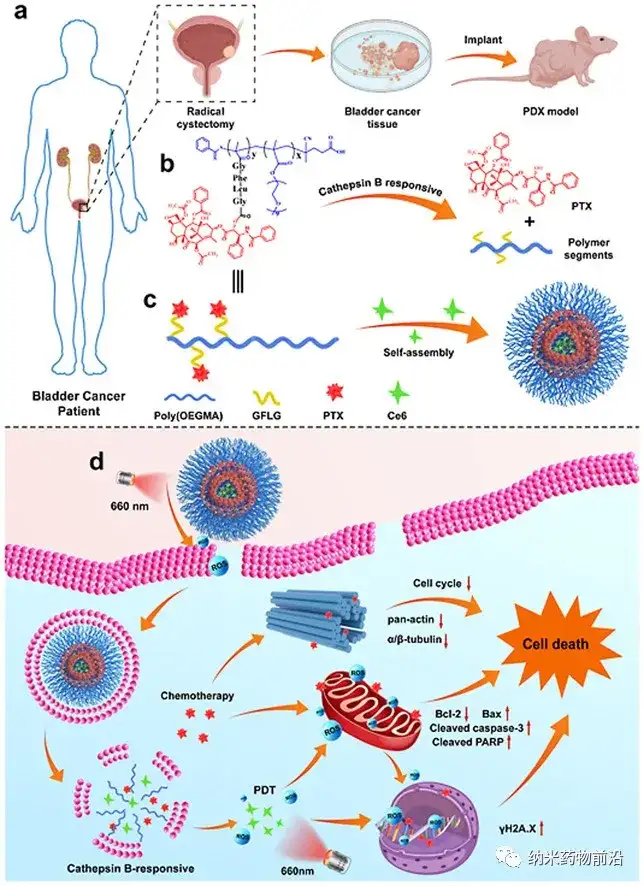Patient-derived xenograft (PDX) models are an important research tool in the fields of tumor biology and drug screening. here, Researcher Luo Kui, West China Hospital, Sichuan UniversityThe polymer nanosystem poly(OEGMA)-PTX@Ce6 (NPs@Ce6), which is composed of the photosensitizer Ce6 and the prodrug of cathepsin B-sensitive polymer paclitaxel (PTX), was constructed, and it was proved that it can pass the two-stage illumination strategy To achieve the photochemical internalization (PCI) effect and enhanced chemotherapy/photodynamic (PDT) combined therapy.
Studies have found that in the human bladder cancer PDX model, NPs@Ce6 has the advantages of good tumor targeting and rapid cell uptake induced by PCI, and its inhibitory rate on tumor growth is greater than 98%. Bioinformatics analysis shows that the combination of PTX chemotherapy and PDT can up-regulate oxidative phosphorylation and ROS production, block cell cycle and proliferation, and down-regulate hypoxia, TGF-β and TNF-α, etc., which are related to tumor depletion, invasion and metastasis Signal pathway. WB analysis showed that chemotherapy/PDT combination therapy can achieve the up-regulation of pro-apoptosis (Bax, cleaved caspase-3, cleaved PARP) and DNA damage (γH2A.X) proteins, thereby inhibiting cell apoptosis (Bcl-2) and The proteins of mitosis (panactin and α/β-tubulin) are down-regulated. The stimulus-responsive polymer prodrug developed by the research is expected to be an effective drug candidate for the treatment of bladder cancer.
Ping Tan. et al. Enhanced chemo-photodynamic therapy of an enzyme-responsive prodrug in bladder cancer patient-derived xenograft models. Biomaterials. 2021
https://www.sciencedirect.com/science/article/pii/S0142961221004178
This information comes from the Internet and is for academic exchanges only. If there is any infringement, please contact us to delete it immediately.








